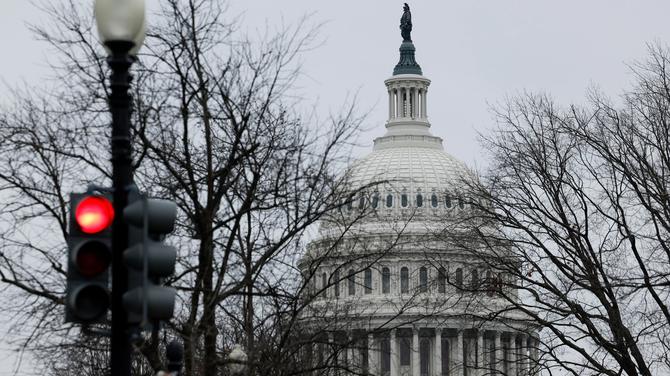🐤 Losing the mojo
Japan was once a pillar of innovation and technology, but several factors have led to its recent decline.
| Monday | January 23rd, 2023 | |
 | |
Happy Monday, chirpers! As you embark on a new week, you might be dealing with some disappointments and frustrations. They might have been your fault or perhaps someone else let you down. Regardless of the cause, it’s important to put things in perspective and realize that it probably wasn’t actually as bad as you initially thought. If you need some inspiration before trying this exercise, check out the “It Was Never That Serious” trend on TikTok, which features people looking back on points in their own lives that they blew out of proportion. -Chris Agee Markets
Nasdaq
IXIC $11,140.43
$288.17 (2.66%) Dow Jones
DJI $33,375.49
$330.93 (1.00%) S&P 500
GSPC $3,972.61
$73.76 (1.89%) EUR-USD
EURUSD $1.09
$0.00 (0.11%) Bitcoin
BTC-USD $22,607.05
-$170.58 (-0.75%) Coinbase
COIN $55.16
$5.74 (11.61%) 🏦 Markets: Wall Street narrowly escaped a week-over-week loss with some gains on Friday, but the future of the market is anything but certain as trading resumes today. This week’s potential volatility will likely hinge on the results of various quarterly earnings reports set to be released over the next few days. Some of the most impactful reports will probably be coming from companies including Microsoft, Tesla, Visa, Mastercard, and Chevron. In the digital currency market, prices have been trending down recently. While the crypto cap remained above $1 trillion as of Sunday evening, it had declined nearly 2% in one day. World
The BreakdownA quick look around the world. Photo by Bruce Yeung/Getty Images
Photo by Bruce Yeung/Getty Images
🎾 In a pickle: The increasingly popular sport of pickleball has more than a few similarities to tennis, and a recent television broadcasting deal will add another one. According to reports, the Tennis Channel will be airing the upcoming Major League Pickleball semifinals and finals, which are set to be played in Mesa, Arizona. Other games will be available through the network’s streaming service. Tennis Channel CEO Ken Solomon referenced the meteoric rise of the sport, which counted more than 36 million Americans among its players last year. As for the network’s coverage, he said: “We’ve gone from one pickleball event in 2021, we had a pretty full year of coverage in 2022, and that is going to escalate significantly in 2023. We have big plans.” The MLP also announced two final teams this week: the St. Louis Shock and Orlando Squeeze. If you're interested in giving this sport a try, check out some starter paddles here 📺 Modi operandi: BBC is promoting its new documentary series on Indian Prime Minister Narendra Modi, but that nation’s leaders don’t want citizens to see it. India’s Ministry of Information and Broadcasting has taken the drastic step of preventing YouTube videos of “India: The Modi Question” from being shared by users across the nation. Officials have similarly called on Twitter to censor dozens of posts that share such videos. The dispute centers on the documentary’s portrayal of Modi during riots more than 20 years ago when he served as the chief minister of Gujarat. A spokesperson for India’s External Affairs Ministry asserted: “We think this is a propaganda piece designed to push a particular discredited narrative. The bias and the lack of objectivity and frankly continuing colonial mindset are blatantly visible.” Both YouTube and Twitter have complied with India’s requests. 👩 Preach it: Although many denominations of the Christian church have long ordained female pastors and ministers, it had never happened in Jerusalem — until Sunday. Known as the Holy Land because of the city’s rich biblical history, church leaders have been reluctant to grant high-ranking positions to women. The Lutheran church in the Old City, however, named a local Palestinian woman its first female pastor this week. As Sally Azar said of her groundbreaking achievement: “I got more excited seeing the excitement of other people. It’s an indescribable feeling to take this step with the support of the church.” Now that she’s broken this glass ceiling of sorts, she said that she hopes “many girls and women will know this is possible and that other women in other churches will join us.” 🌳 Tree-mendous: The threat of climate change is impacting every corner of the globe, and volunteers in Paris, France, are doing their part to help combat rising temperatures across the region. Locals of all ages have come together to plant trees using a method common in Japan that will provide wooded areas designed to slow the toll of global warming and increase biodiversity in the area. A boy and his 79-year-old grandmother were among those creating the so-called “pocket forests” in one section of the city recently. As Grazia Valla explained, she “jumped at the chance” to work on the project with her grandson, adding: “We are very interested in everything to do with nature.” The creation of these small forests was first recorded about 50 years ago when Japanese botanist Akira Miyawaki mimicked the natural formation of ancient forests that grew around shrines and temples in that country. Share this issue:world news
A Breakdown Of Japan’s Shift From Leading The World To Playing Catch-UpThings are significantly different than during the heyday of the 1980s. Photo by Carl Court/Getty Images
Photo by Carl Court/Getty Images
Not long ago, people around the world looked to Japan for technological breakthroughs and advancements that promised to revolutionize the future. Although the nation is still prosperous and its citizens enjoy a better-than-average standard of living, it no longer wields the global influence it earned a generation ago. So what caused this shift? There are several factors, but two stand out. The end of innovation Visitors to Japan still marvel at cultural achievements such as a world-leading high-speed rail system — but most of those accomplishments were made many years ago. When the nation emerged from the devastation that led to the end of World War II, it did so with a determination to reshape itself as a manufacturing juggernaut. That plan paid off with class-leading automobiles and consumer electronics designed and made by Japanese companies. By the early 1990s, however, the economy was in deep trouble and regulators began seizing control of almost everything that happened nationwide. This curtailed innovation and fueled the stagnation that is still being felt today. The dwindling population Part of what made Japan so attractive to the rest of the world was its culture, which was and still is unlike anything else on the planet. From animation to music to architecture, this is a corner of the globe that is largely unsullied by outsiders — and that’s by design. Only about 3% of the population is foreign-born and, although there are many multicultural families, the nation has always made it quite difficult for would-be immigrants. Although this has helped preserve its society and national identity, it has also resulted in an aging population and the deterioration of many once-vibrant communities across the country. As the old guard maintains a tight grip on power, it seems unlikely that anything will change in a substantial way anytime soon. Share this story:entertainment
Struggling To Understand On-Screen Dialogue? You’re Not Alone.There are a few central reasons for the increased use of closed captioning. Tenor
Tenor
If you’ve found yourself turning on closed captioning while watching a movie or TV show at home, join the crowd. Many people are complaining that it’s becoming increasingly difficult to understand what actors are saying these days. And it’s not just because we’re getting old (even if some of us are). There seems to be a widespread issue here, as evidenced by an informal poll recently conducted by Vox. What’s going on? You might think that better cameras, microphones, and other filmmaking equipment would make it easier to comprehend on-screen dialogue, but the opposite appears to be happening. According to respondents from the aforementioned poll, well over half of those who do not have hearing loss say they regularly use closed captioning just to follow along with what people are saying. One expert in the field recently weighed in with some insight about the causes of this frustrating trend. Pace Pictures dialogue editor Austin Olivia Kendrick explained that “it’s very layered and it’s very complex,” but identified a few key factors.
economy
Understanding The High-Stakes Political Battle Over The Debt CeilingThis time, the partisan bickering might play out much differently. Photo by Anna Moneymaker/Getty Images
Photo by Anna Moneymaker/Getty Images
If you’ve been following politics for a while, you’ve probably heard the term “debt ceiling” at least a few times. It’s basically an arbitrary cap placed on the nation’s federal borrowing power that is meant to keep spending in check. Instead of setting a limit for future spending, the limit actually dictates the nation’s ability to pay its existing debt. Now that we’re facing such a moment yet again, it might be helpful to dig a bit deeper into the issue. A brief history of the debt ceiling The federal borrowing limit has been in place for more than a century and has been increased 78 times since 1960. Even though it would only take a vote of Congress to eliminate the idea of a debt ceiling altogether, the political backlash makes this an untenable solution — so here we are again at a crossroads. The limit hit $6 trillion under Bill Clinton, and by the end of Donald Trump’s term, it was at a staggering $22 trillion. The current ceiling, exacerbated by the COVID-19 pandemic is more than $31.4 trillion. Why this time might be different Whenever lawmakers have faced a debt ceiling crisis in the past, it was resolved before a default, which would devastate the economy and the status of the U.S. dollar as the preeminent global currency. With the threat of a major recession currently hanging over our heads, a debt default would only make things much worse. Officials on both sides of the aisle agree that default is an unthinkable option, but many Republicans want to make some significant budget cuts before agreeing to a debt ceiling hike. If they can’t come to an agreement with Democrats, there is a real possibility that America could default for the first time in its history. Share this story:Game
Solve today's crossword and win a prize!Highest score wins an Amazon gift card!
*Prizes are sent out via email the next day by 11am EST. fun
 Instagram: @eyewashcomic
Instagram: @eyewashcomic
|

Written by Chris Agee 90 N Church St, The Strathvale House Copyright © 2022 Early Chirp. All rights reserved. |




